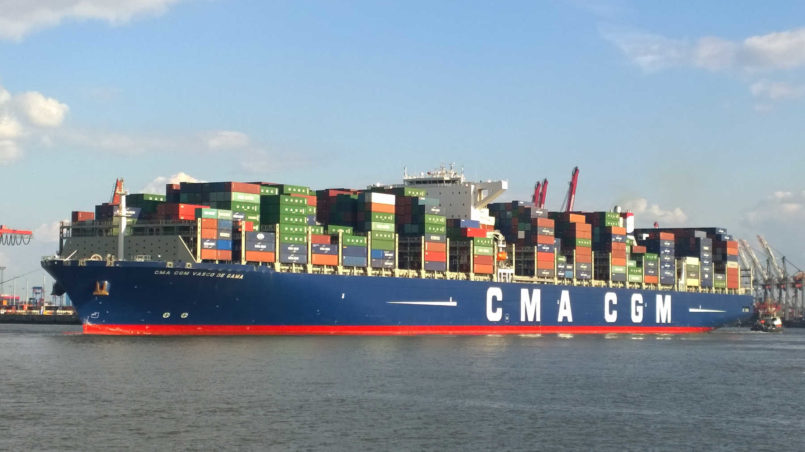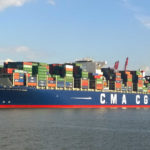New Awareness of Energy – On the Sea and In the Air

Shipping
Shipping is an indispensable element in transport and a motor for the global economy. Approximately 40,000 cargo ships transport around 90% of the movement of goods worldwide. Further, around 90% of the EU’s foreign trade and over 40% of the EU’s domestic trade takes place by sea.
Source: German Federal Office for the Environment
For the most part, both passenger and cargo ships are run with heavy fuel oil. Heavy fuel oil is a remnant from the distillation process after petrol, diesel, kerosene, etc. have been produced from the crude oil. The motors of these giants – which are as tall as several storeys – are able to burn this oil with at times phenomenal consequences for our environment.
Furthermore, the burning of the fuel, in comparison to modern car engines, causes the emission of a disproportionate amount of pollutants. As an example, the sulphur content in heavy fuel oil is up to 3,500 times higher than in, for example, diesel, which, as we know, itself is not one of the cleanest burning fuels. Moreover, many shipping operators dispense with the post-treatment methods for the waste gas, which, in their opinion, is too costly.
However, there are alternatives also for the shipping industry. As has become known recently, Norway wants to use Co2 neutral biofuels for its fleet and already from 2030. On the one hand, synthetic fuels are being considered and, on the other hand, many ships could now run on a natural gas drive. This would admittedly not be Co2-neutral but less environmentally damaging than the conventional operation with heavy fuel. Emissions could, however, already be reduced with existing technology.
Saving with ideas from the past
The E-Ship1 is one of the first commercial cargo ships of the modern era that uses Flettner rotor sails. The Flettner rotor sail is similar to a rotating sail, an aerodynamic drive system which can produce thrust when wind blows from the opposite direction. The heat from the diesel aggregates and their emissions are used to operate a steam turbine, which, in turn, sets the rotor sails in motion. As such, fuel savings of up to 25% can be achieved which, measured in terms of the consumption of this type of vessel, should” not be underestimated. Flettner rotor sails were already used in the 1920s
Wind could also once again play a role in the shipping industry in the near future. There are plans to equip cargo ships with retractable sails. Also “kites” affixed to the bow could contribute significantly to a reduction of the required fossil fuels. Of course, these measures could be combined with the biofuels which will hopefully be used soon. Every litre of unused fuel, regardless of its source, counts.
Saving resources in the air
For many of us, flying has become a normal part of life. More and more people are able to afford travelling by plane – unfortunately with fatal consequences for our climate. At the moment, the global percentage of Co2 emissions, which reach the atmosphere through air traffic, amounts to about 2.2%. Carbon dioxide emitted at a height of approximately 10 kilometres is, according to the latest study results, up to three times more harmful than carbon dioxide emissions at ground level. The most up-to-date passenger aircrafts, such as the airbus A320neo, advertise with 15% less kerosene consumption, which can be achieved through aerodynamic and mechanic optimisations on the turbines. Unfortunately these possible savings are negatively overcompensated by the rapid increase in the volume of air traffic.
Also here, biofuels or synthetic fuels represent a ray of hope for the future. Already in 2008, Virgin Atlantic tested a kerosene/biofuel mixture successfully. Biofuel was gained from the Jatropha plant, an energy crop which is inedible for humans. In 2011 Lufthansa followed with a 50:50 mixture of kerosene and biofuel from biomass. Researchers also consider algae kerosene as a possible technology of the future. Algae absorb the Co2 in the atmosphere through photosynthesis and transform it into fats. They are relatively easily processed to climate-neutral fuels, such as, among others, kerosene.
Unfortunately, biofuels do not solve the problem of the contrails. These artificial clouds are suspected of being an additional cause of global warming, because this layer functions as a reflector for the heat radiation of the earth. However, maybe an old acquaintance could help us out of this misery – the Zeppelin. There are endeavours to use airships as freighters, as, for example, envisaged by Lockheed Martin. Traditional passenger airplanes also do not appear to have exhausted all their possibilities. Various design studies indicate that a reduction of fuel of to up to 70% could be realistic in the long-term. Let’s see, what the future brings.
Clean air – a scarce good
Recently two studies have been published, the content of which could hardly be more dramatic. According to the child welfare organisation, Unicef, 300 million children worldwide suffer from the air pollution, 600,000 of them die annually as a result of the direct and indirect consequences of this pollution. “Primarily solids, such as fine dust, sulphur dioxide, nitrogen oxides, ozone and polycyclic aromatic hydrocarbons are concerned”, so the shocking finding of the study. Whoever thinks that these problems arise only in “third world” countries is mistaken. In Europe alone, 120 million children suffer from the alarmingly high pollution levels, and 20 million of them inhale double the concentration of that classified as the still acceptable maximum by the WHO.
This figure astonished even me. Approximately seven million people die each year from the consequences of air pollution, according to the WHO that is every eighth premature death. With a clear conscience I can call these facts dystopian. It shows the absurd failure of our society and humanity per se. Through ignorance and “illiteracy”, we are transforming our planet into some kind of cloaca. Every one of us is called upon to stop this madness, whether poor or rich, because everyone can make some contribution to protecting our unique planet, and therefore us.
I have decided to continue this series after all, contrary to my announcement in my last article. The findings, the plans and the research results of this incredibly important area are too significant and interesting. In the next part I would like to take a look at the “plastic problem“ and highlight possibilities to replace oil with renewable energy forms as a workable alternative.
Translation into English: Donna Stockenhuber
Credits
| Image | Title | Author | License |
|---|---|---|---|
 |
Container-Schiff | hummelhummel | CC BY-SA 3.0 |
